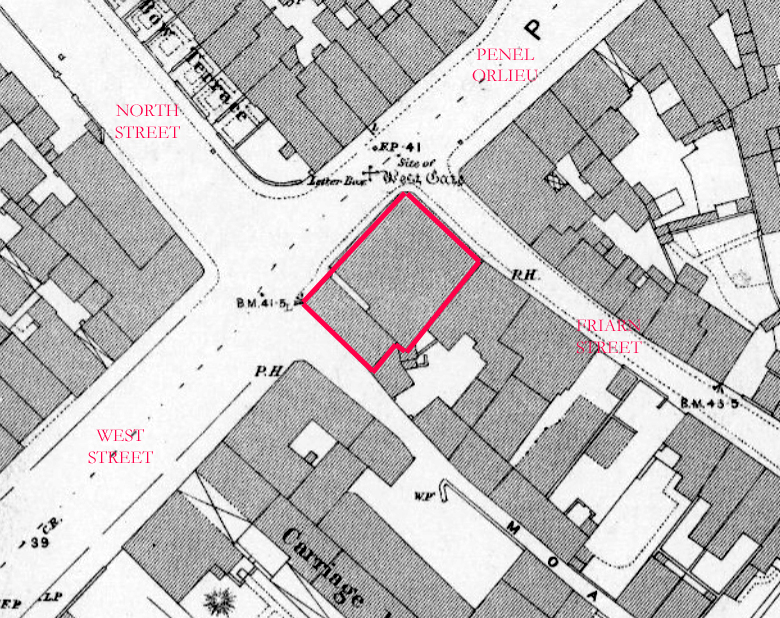
This was the location of the Westgate Almshouses. These were described as outside the Westgate (which stood directly in front of the east end of this plot) and on the opposite side corner of Moat Lane to the Bell Inn. As this plot seems to have been hard onto the Westgate, it might be possible that they were built over land reclaimed from the old town ditch. Otherwise it would be strange that the houses to be outside the gate yet within the ditch, supposedly marked out by Moat Lane. The narrow building on this plot probably represents infill of the town ditch.
The Almshouses were first mentioned in 1455. In 1546 these were assisted by a generous endowment in a legacy from John Bentley, a shoemaker. Another legacy came in 1555 from Elizabeth Prowse. The alsmhouses were apparently four small separate houses and a bellcot.
They were demolished during the Wars of the Three Kingdoms in the 1640s. This was to provide a clear line of fire for the Royalist town defences centred on the old Westgate. In 1656 the Mayor of Bridgwater, Henry Milles, sought aid from John, Lord Disbrowe, Oliver Cromwell’s Major General of the West, to rebuild the almshouses using stone taken from the town’s civil war ramparts. However, this does not seem to have been granted and the town’s almshouses would later be found outside the Southgate.
After the Civil Wars the plot was soon occupied by a private home. The leases for this property can be found at the Somerset Heritage Centre (D/B/bw/CL/41).
Sources
Jack and Chris Lawrence, A History of Bridgwater, (Chichester: Philimore, 2005)
Bob Dunning, The Victoria County History of the County of Somerset, Volume 6 (Oxford, 1992)
David Sivier, Bridgwater: Personality, Place and the Built Environment, (BAR, Oxford, 2014)
